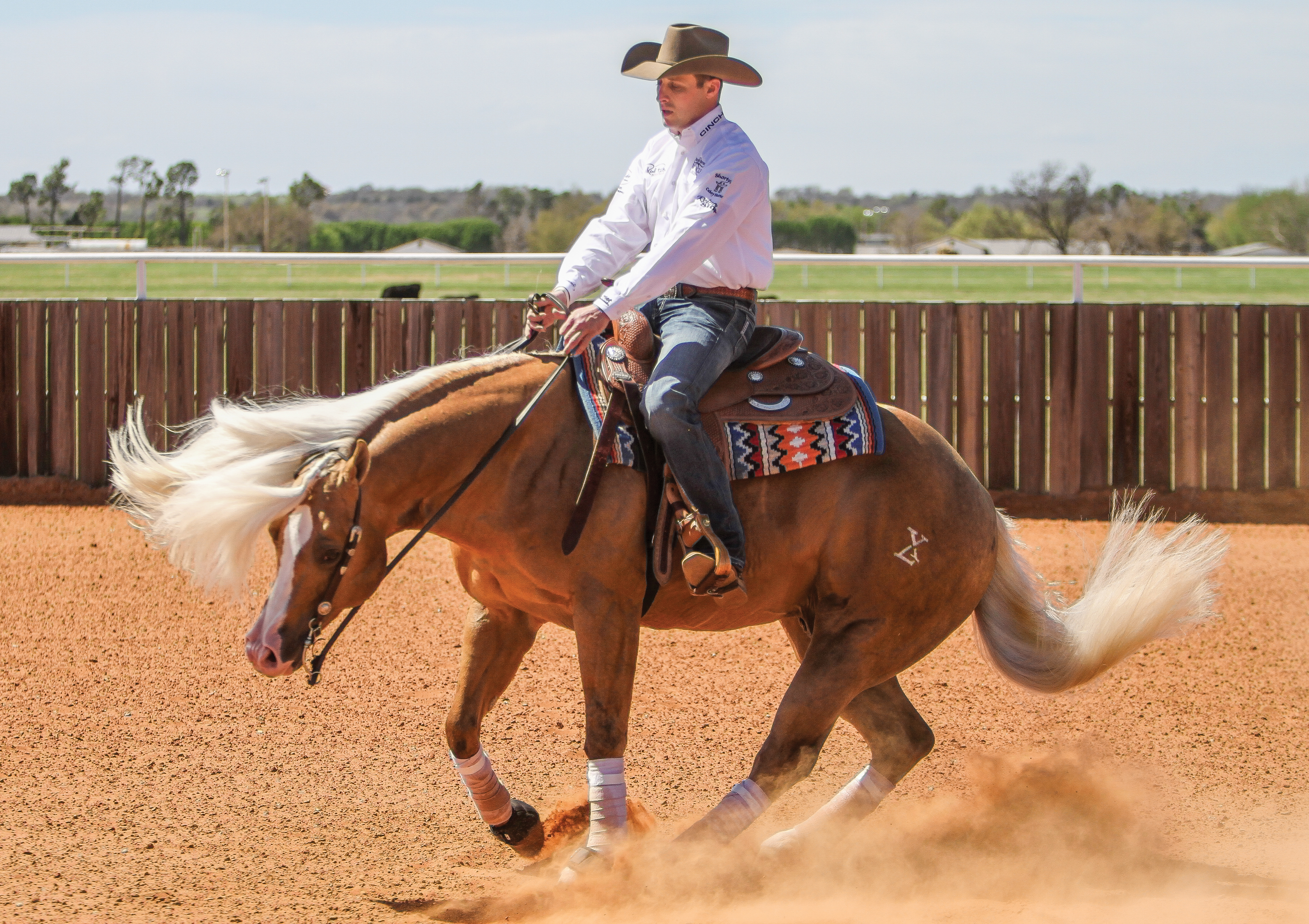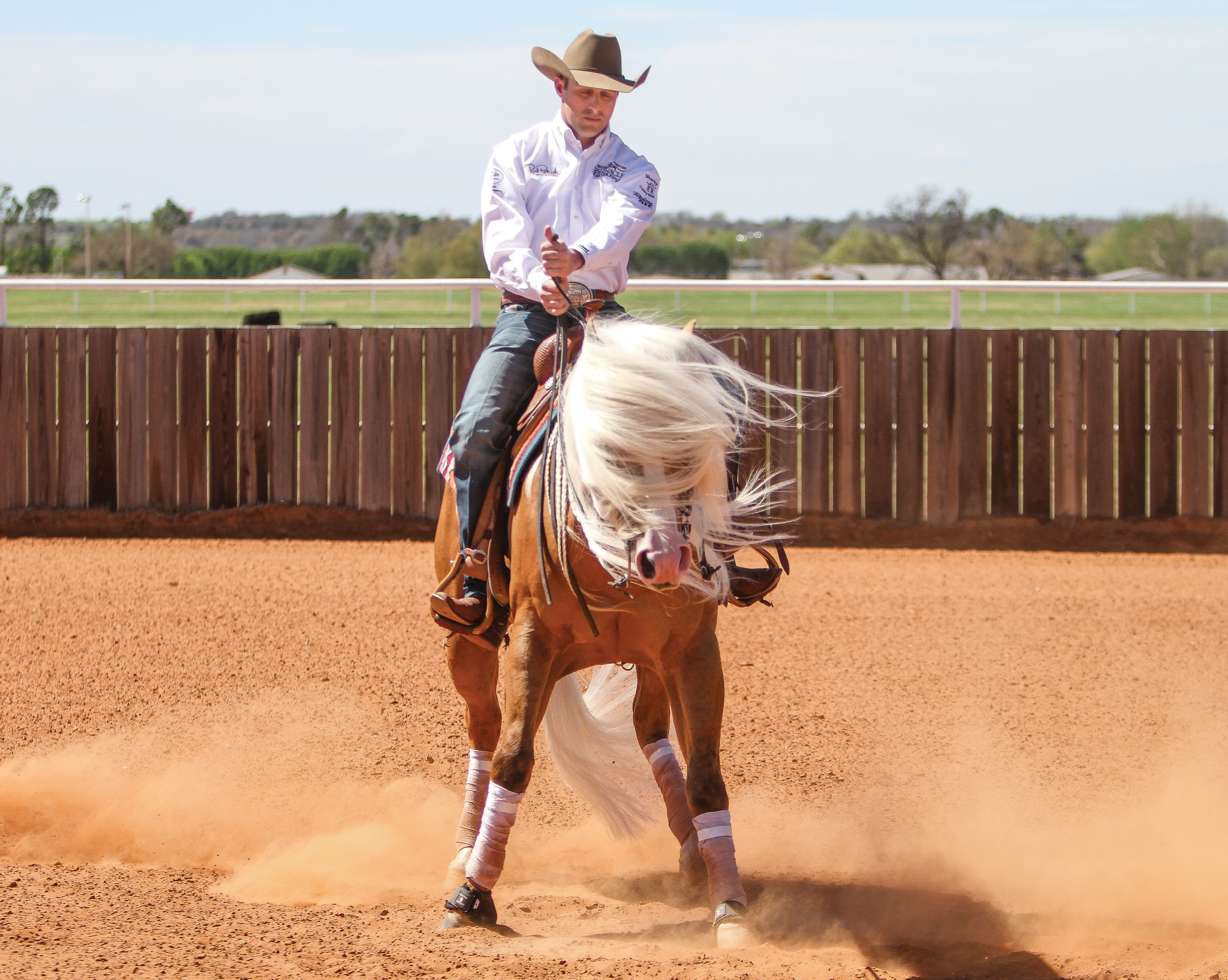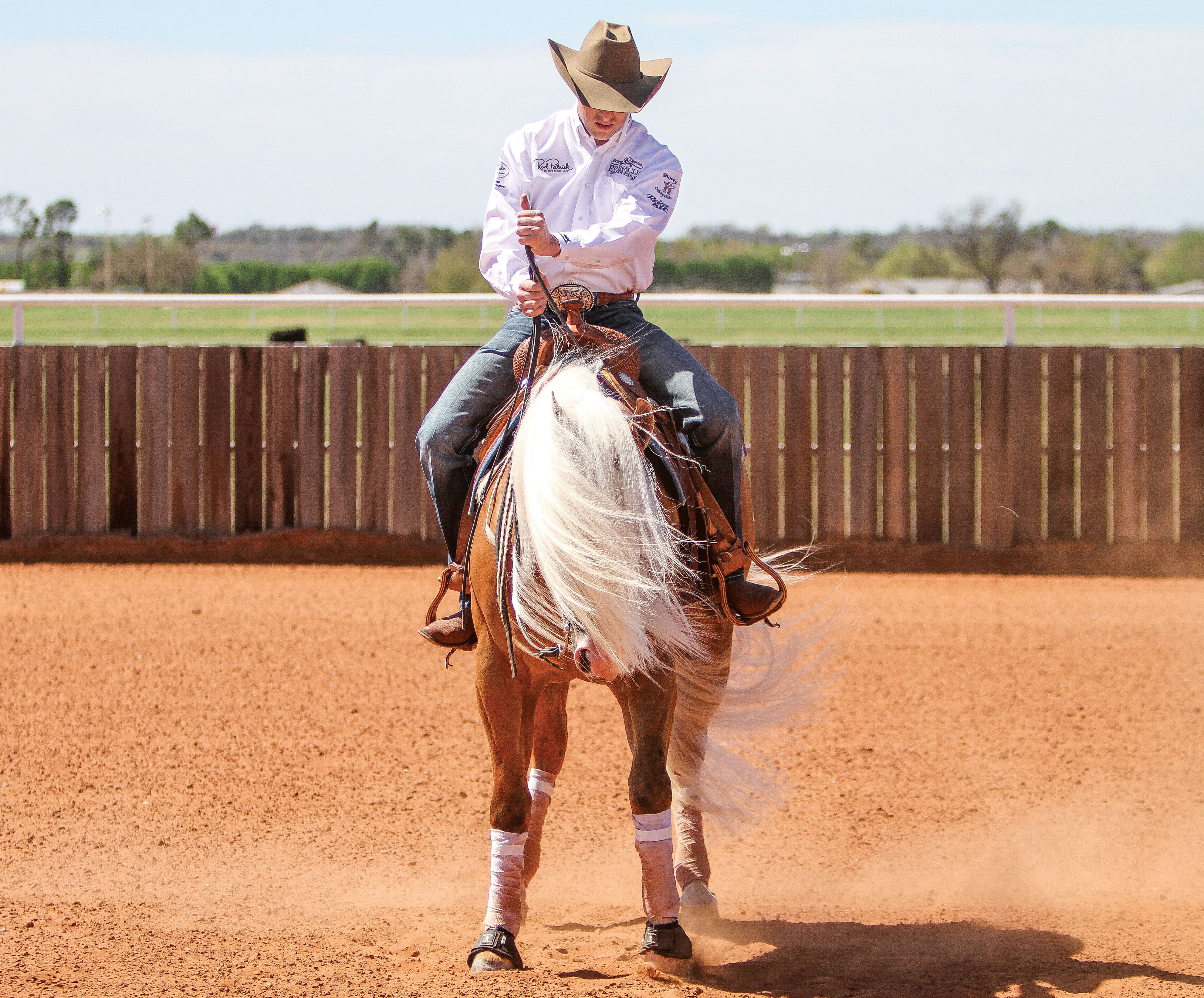A “plus” spin can be ruined by a poorly timed stop—and leave you sitting in the penalty box by the end of the maneuver. It could be that your timing was off and you didn’t ask for the shutdown early enough, or maybe your horse didn’t listen to your cues, leaving you past your intended mark.

Nichole Chirico
If you compete in events like reining, ranch riding, or horsemanship, chances are you’re required to perform at least one set of spins. Nailing your stop of those spins could be the difference between first and second place. Outside the show pen, having an accurate stop when you ask for a turn helps with overall guide and control.
Here I’ll discuss what you might be doing wrong when you’re in the show pen and my methods for correctly teaching a horse how to stop at home so when it comes time to show you’re not left past your intended mark.
MISTAKES YOU’RE MAKING
Not knowing your comfort zone. It’s easy to practice one speed at home and then get to the horse show and feel intimidated by the rate of speed other riders spin. However, you’re not doing yourself any favors by pushing your horse past the speed you’re both most comfortable with.
Not only do you risk overturning because you’re going at a speed you’re not used to, but you also risk frustrating your horse by changing the way you ride and pushing him past his abilities, which should be identified at home. Avoid this mistake by practicing the speed you want to go in the show pen at home and in the warm-up pen.
Failing to plan. You need to plan for your spins to end. If you’re not prepared to stop, you can’t expect your horse to be. Once you’ve hit the 3/4 mark on your spin, look ahead to see exactly where your stopping point is. That way you can plan to ask your horse to stop before you actually get there. At a horse show, you can also look for a mark or a banner on the rail to help you find a stopping point.
Fear of over-spinning. Under-spinning can also land you a penalty. It often happens when you’re either afraid of over-spinning and ask for the stop early or you lose track of where you are in the spin.

Nichole Chirico

Nichole Chirico

Nichole Chirico
THE THREE STOPPING CUES
When I ask my horse to stop after a spin, I like to include three different cues to ensure that he understands what I’m asking him. At home, I’ll practice these elements together and also separately, so when it comes time to ask for a stop in the show pen and I use all three cues together, I know my horse is going to understand what I’m asking of him and stop, avoiding the half-point penalty that comes with overturning.
Cue #1. Begin with your feet. When you start and are in the middle of your spin, keep your outside leg on your horse so he knows to continue turning. When it’s time to stop, release your feet and push weight into your heels. It’s similar to how you ask your horse to stop from a lope.
Cue #2. Next is your voice. Let your horse know you’re ready to stop turning by saying “whoa.” At home, school your stop by only using your voice so your horse is fully prepared to stop when you say the command.
Cue #3. The final cue is your hand. Your horse should be comfortable with neck reining and understand the difference between starting a turn and stopping your turn. When you go to your hand, you want your horse to bridle up. If he’s not soft in his face you risk the chance of having him throw his head in the air if you go to your hand a little quicker in
the show pen.
TEACH HIM TO NECK REIN
When you first work with your horse, I recommend outfitting him in a snaffle bit. Once your horse understands what you’re asking of him and feels comfortable in the snaffle, move up to a shanked bit, but continue to ride in two hands until he wants to stay bridled up and relaxed in your hand. The series of photos on page 54 illustrate the steps.
During a spin you’ll use outside rein for a majority of the turn. If you’re spinning to the left, use your outside (right) rein to guide your horse’s shoulders through the turn. As you ask for your turn, your horse should have his inside (left) shoulder standing up and his head slightly tilted in the direction you’re turning. He needs forward motion in his front legs so he’s not sucking back or tripping over himself, and he should keep his hindquarters still to avoid turning on his belly. Once you’re ready to stop the spin, use your left rein—or your new neck rein—to stop your horse’s front legs. Keep light pressure on your new neck rein until your horse wants to bridle up.
When you work on having your horse stand collected after a stop, he’s going to stay in the bridle if there’s ever a time you have to stop him a little harder in the show pen—and in one hand.
If your horse doesn’t stop his feet when he feels the new neck rein, or doesn’t understand what you’re asking, snug up on your new neck rein and have your horse turn one revolution in the opposite direction until he comprehends the feel of the new neck rein when you ask for a stop. Once you finish that revolution, stop and settle for a minute before asking your horse to turn again.
If you’re just teaching your horse how to respond to neck reining during a turn, don’t be surprised if it takes several sessions before he fully understands what you’re asking of him.






